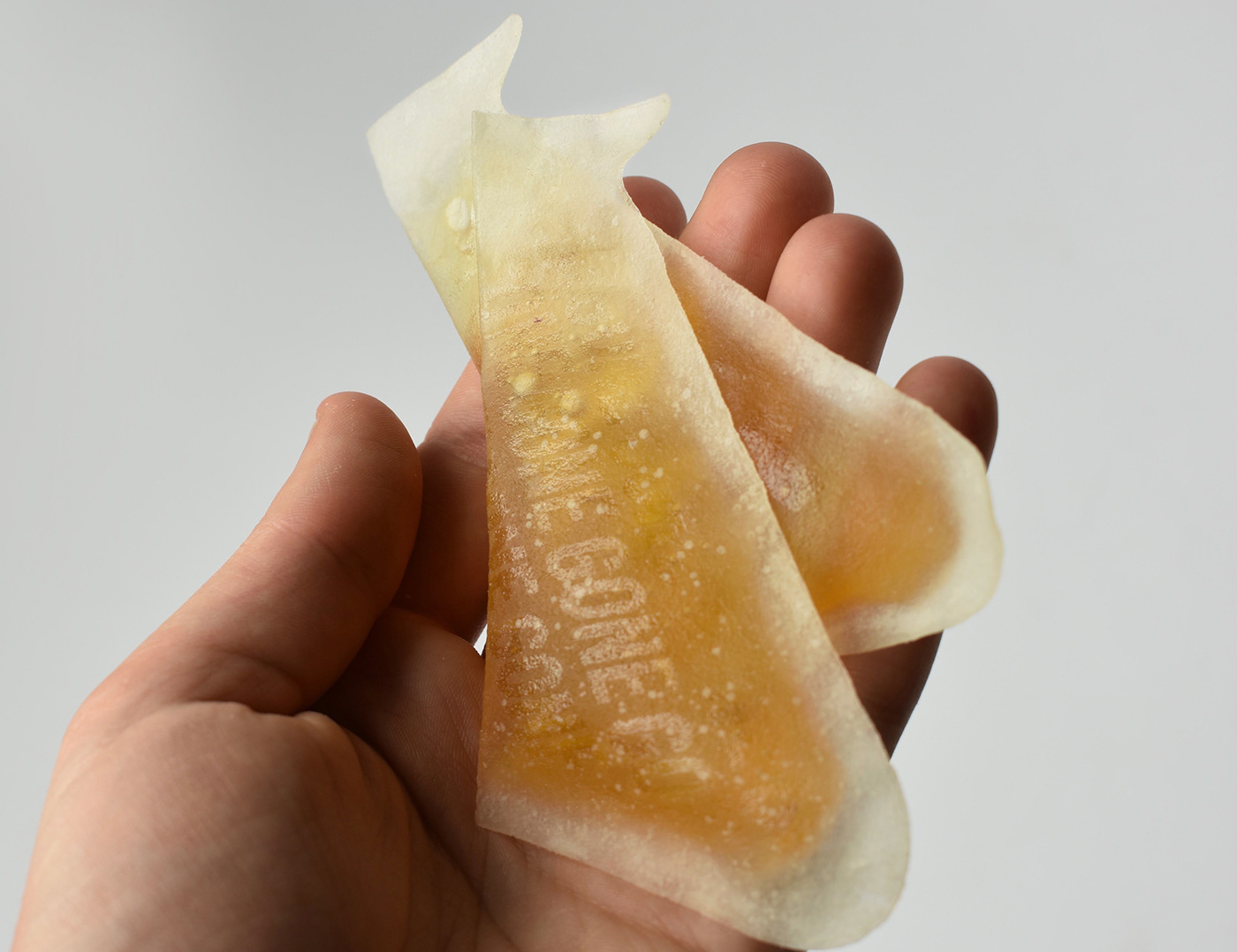
intuitive sustainability
How might we change the concept of disposability without challenging the behavioral instinct to just “throw it away?”
This project began with Studies in Natural Packaging, an in-depth exploration of plant-based bioplastics. By evaluating the entire life cycle of the material, from its ingredients and fabrication to functional applications and disposal, I was able to avoid the environmental side effects that often accompany modern plastics. It’s no secret that the use of petroleum-based plastics for single-use products like grocery bags, cups, and cutlery is a highly unsustainable practice because of the material’s permanence and expansive carbon footprint, but we continue to choose the less sustainable options in exchange for a level of convenience that has become a necessity in modern life. “Gone” provides an opportunity for the user to choose sustainability and convenience at the same time.
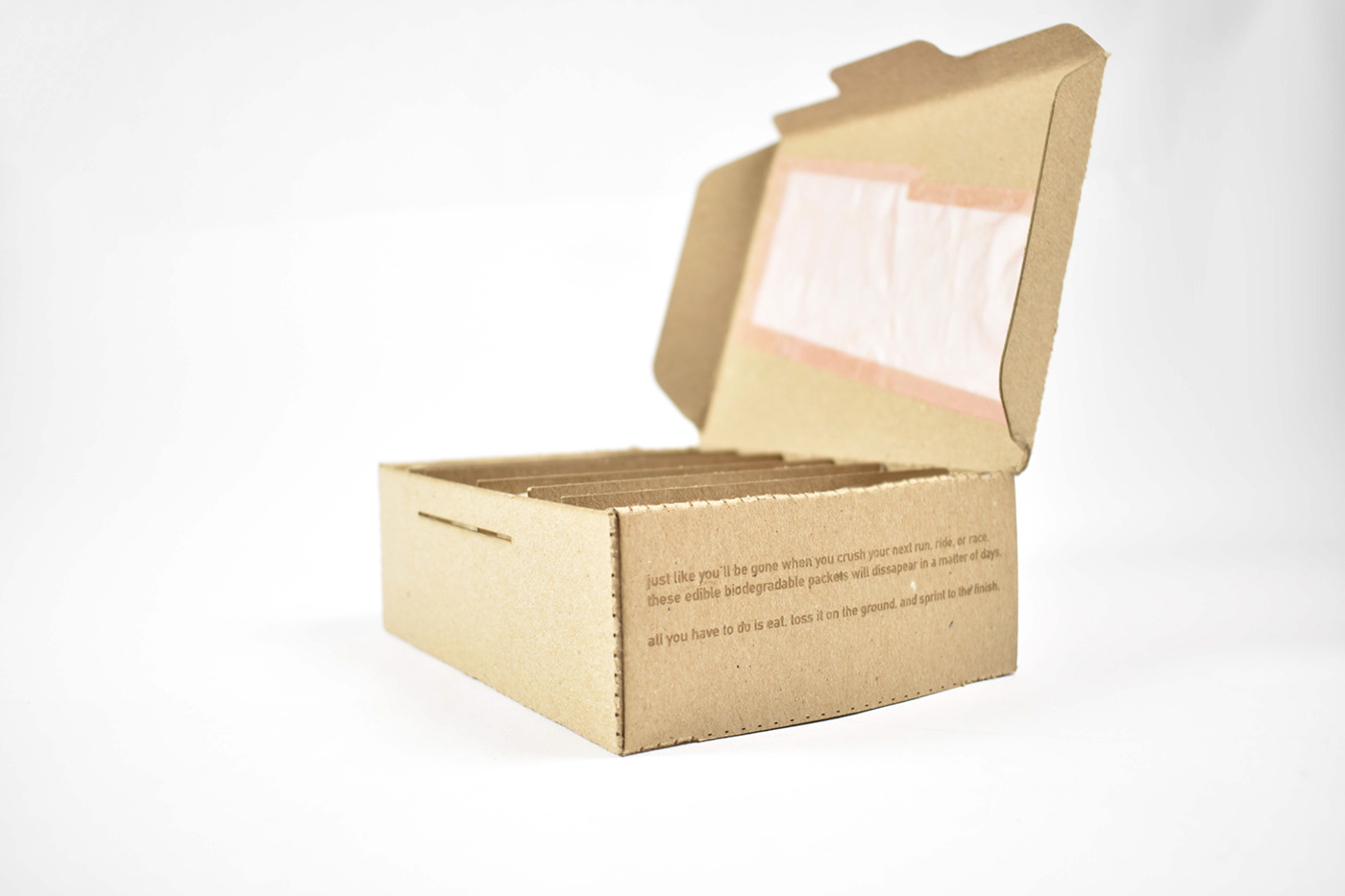

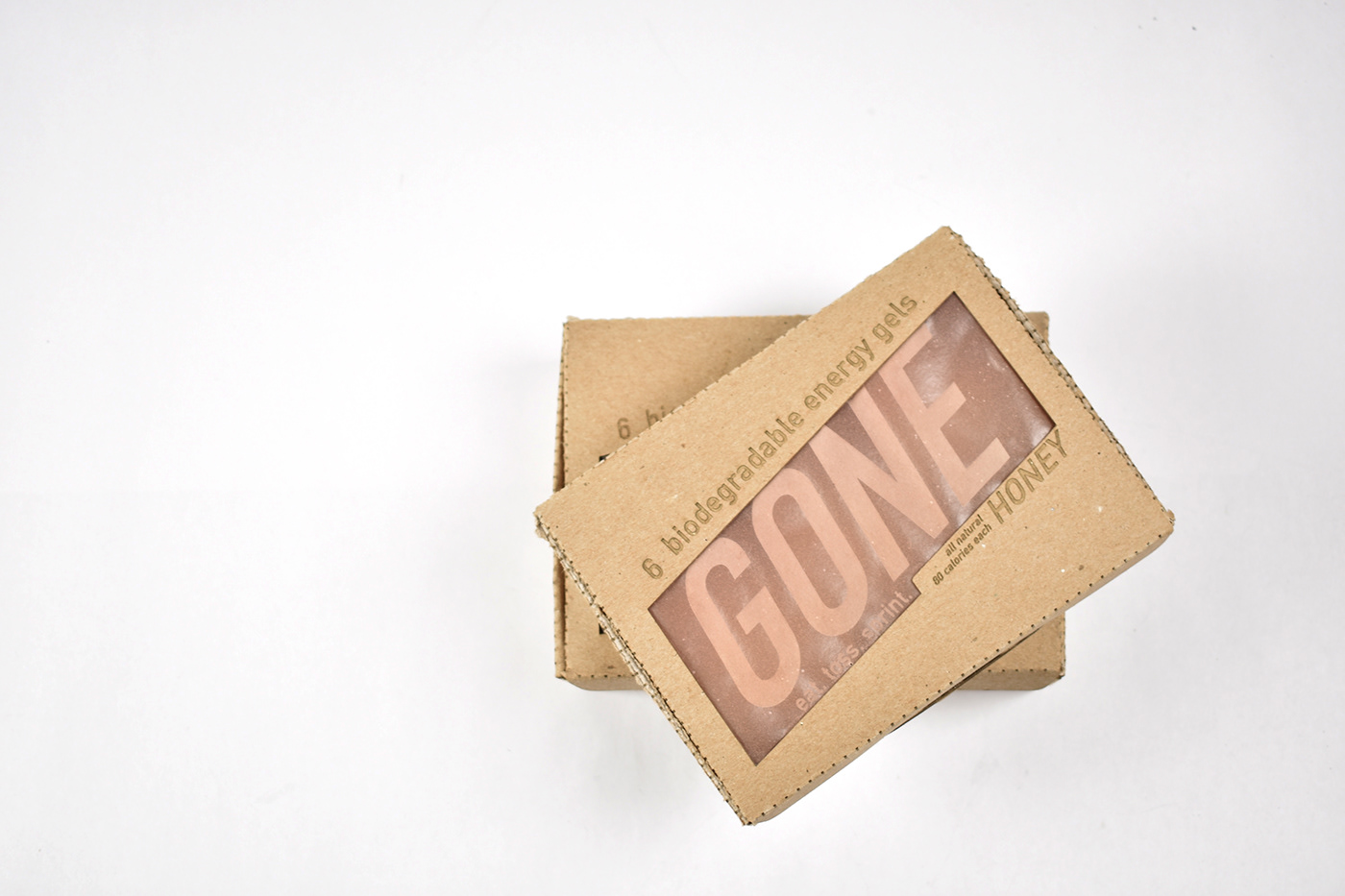
Design for the retail packaging is also fully compostable, made from paperboard and finished with more laser-etched bioplastic.
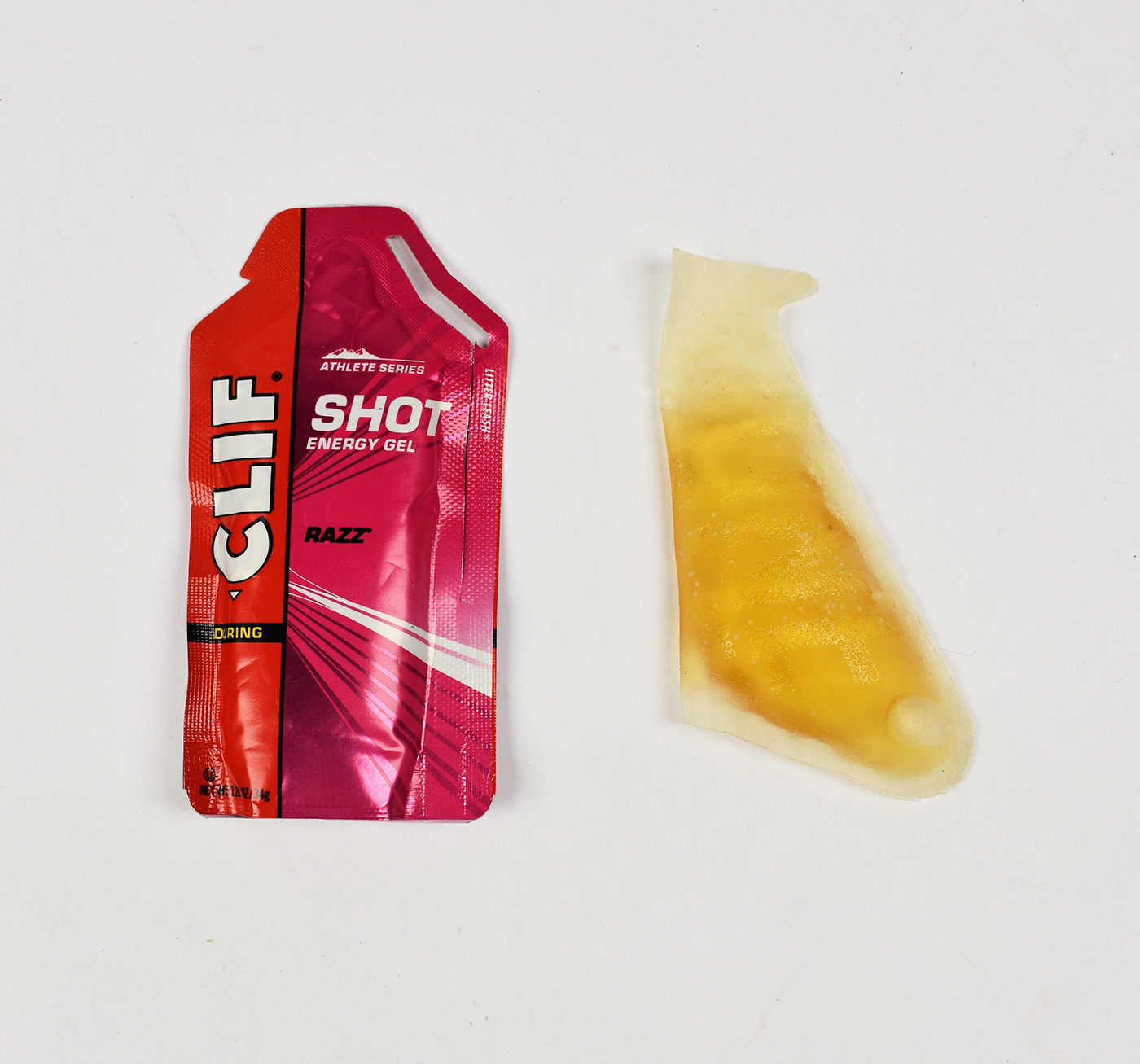
"Gone" provides an opportunity for the user to choose sustainability and convenience at the same time.

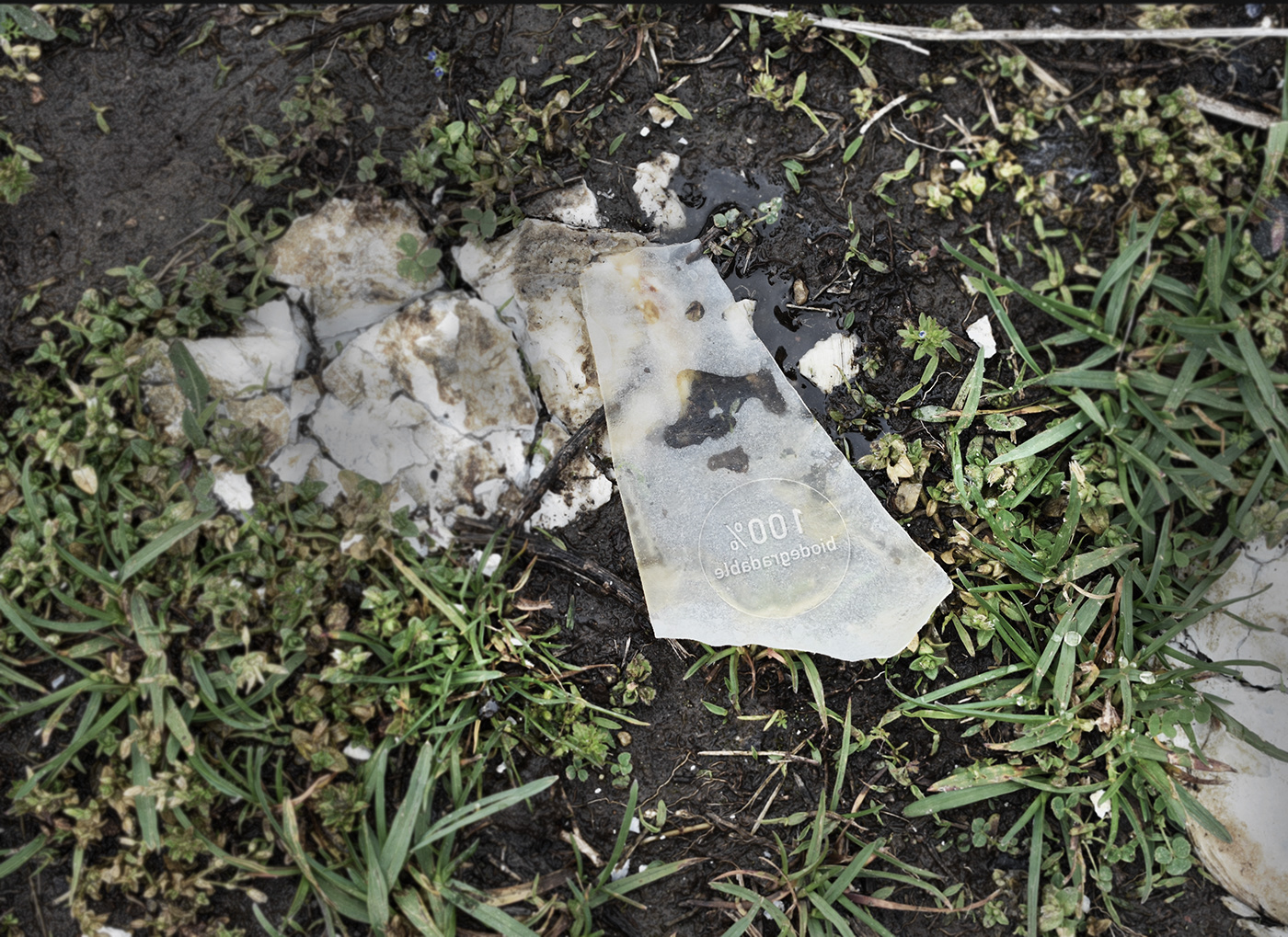


Gone next to an existing competitor product, Clif Shot Energy Gel.
Modeled by Danielle Morsehead, Team Twenty20.
development
Once I reached a suitable material, I began to experiment with different manufacturing and processing methods. User testing revealed a problem I had not encountered before; the uneven,organic texture of the bioplastic I made felt gross when compared to modern plastic films. The greatest challenge I faced was giving a purely organic material the same artificial, manufactured aesthetic that seems to comfort the typical consumer.
While the initial experiments appeared rough around the edges, they began to look more precise with better tools. Laser-cutting allowed a way to make irregular sheets of material appear consistent. Looking to nature for inspiration, I captured images of the material under a powerful Electron Scanning Microscope (ESM), and derived a pattern to laser-etch onto the surface of the same material.


One of several images captured under the ESM at Brown University (left), laser etched bioplastic (right)
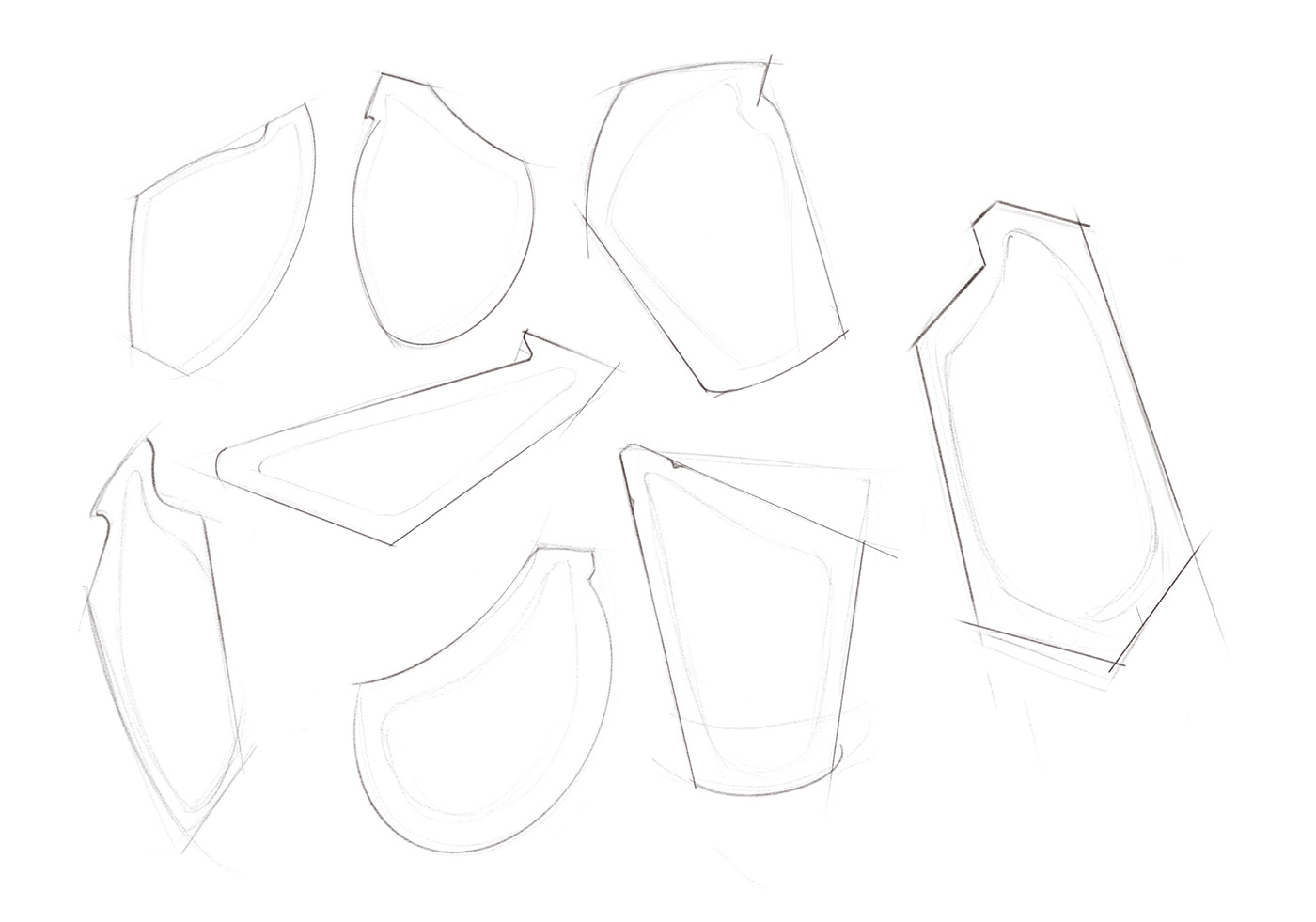
Form sketches for energy gel packaging based on ESM images.

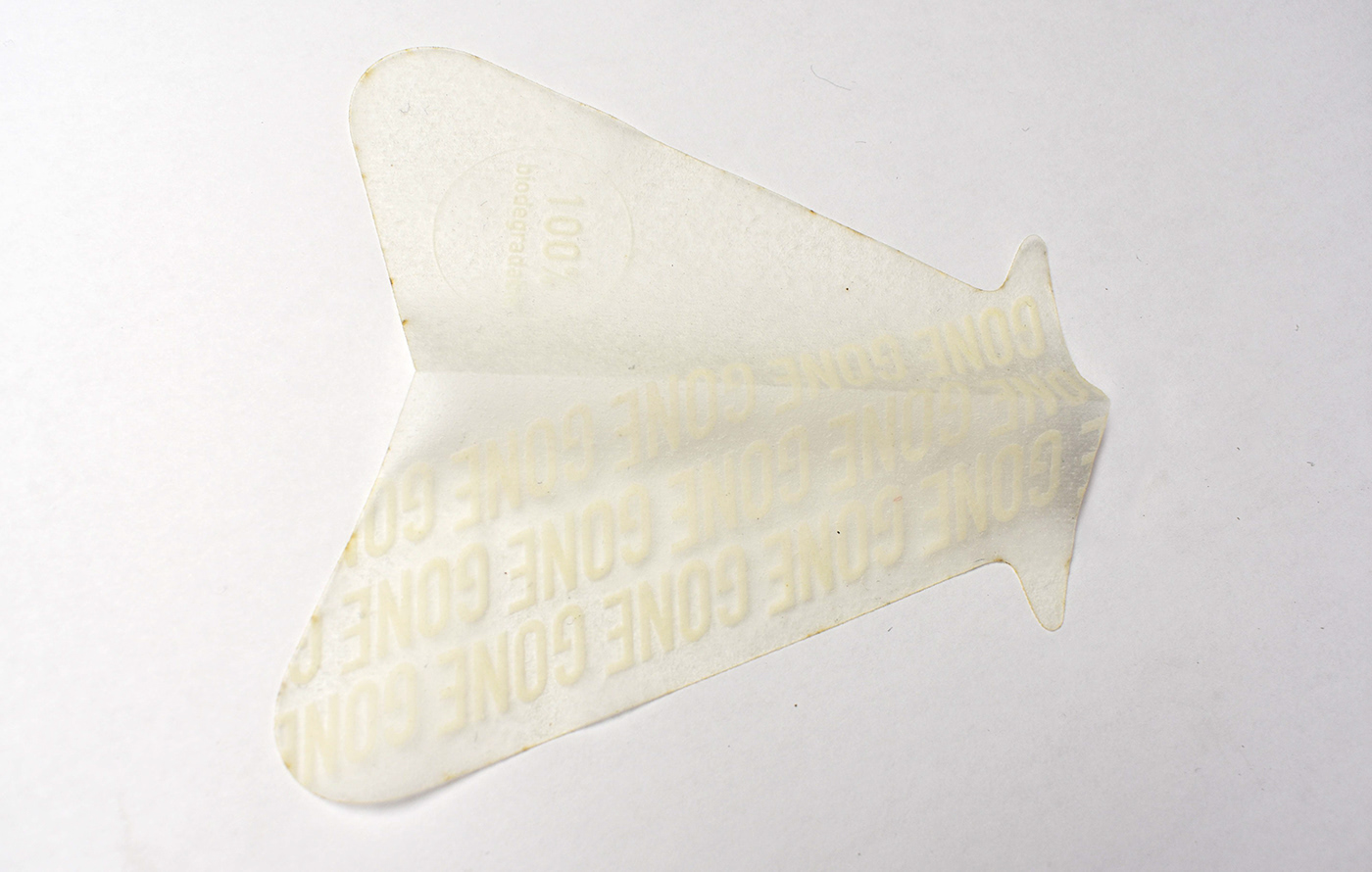
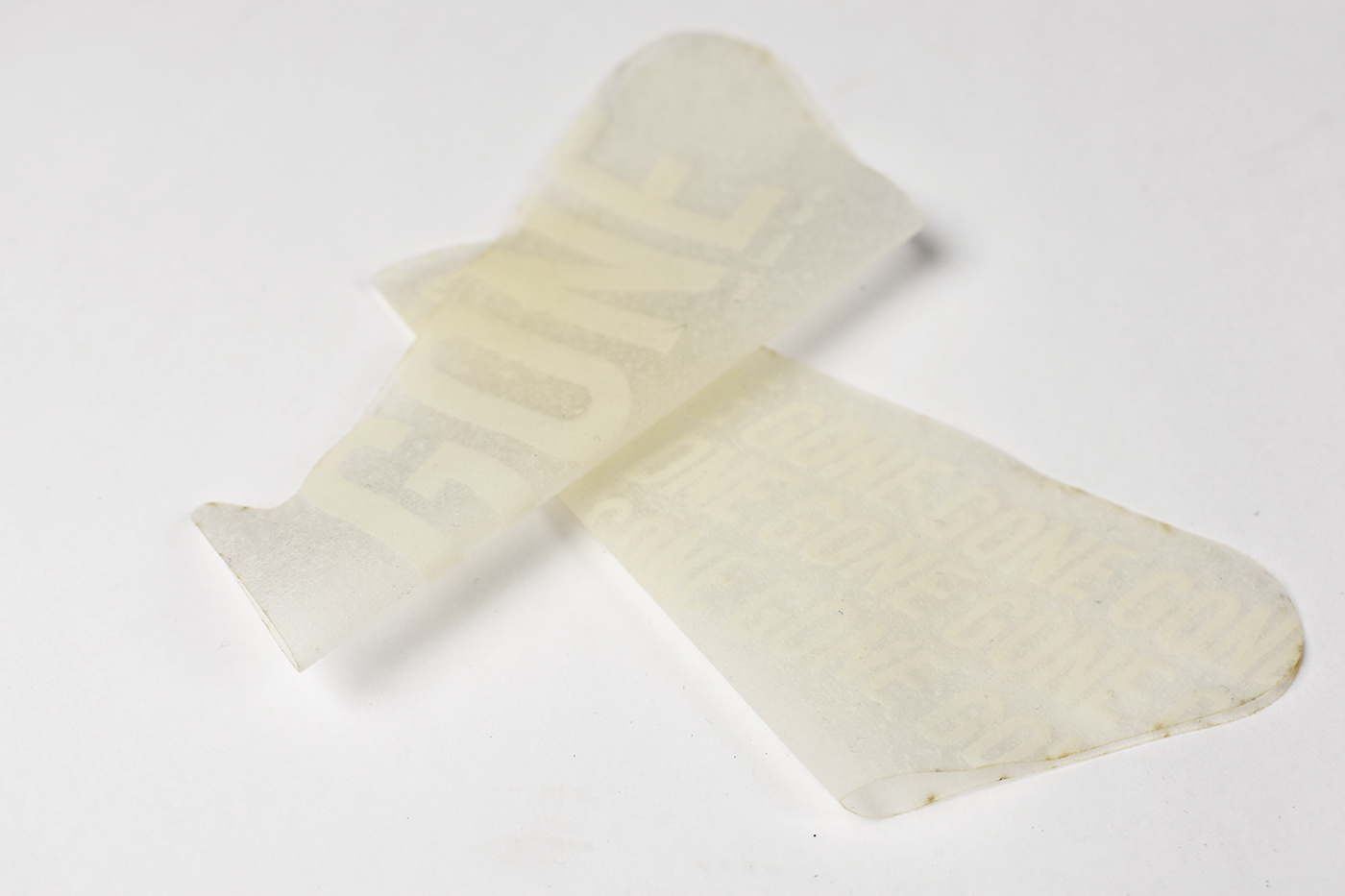

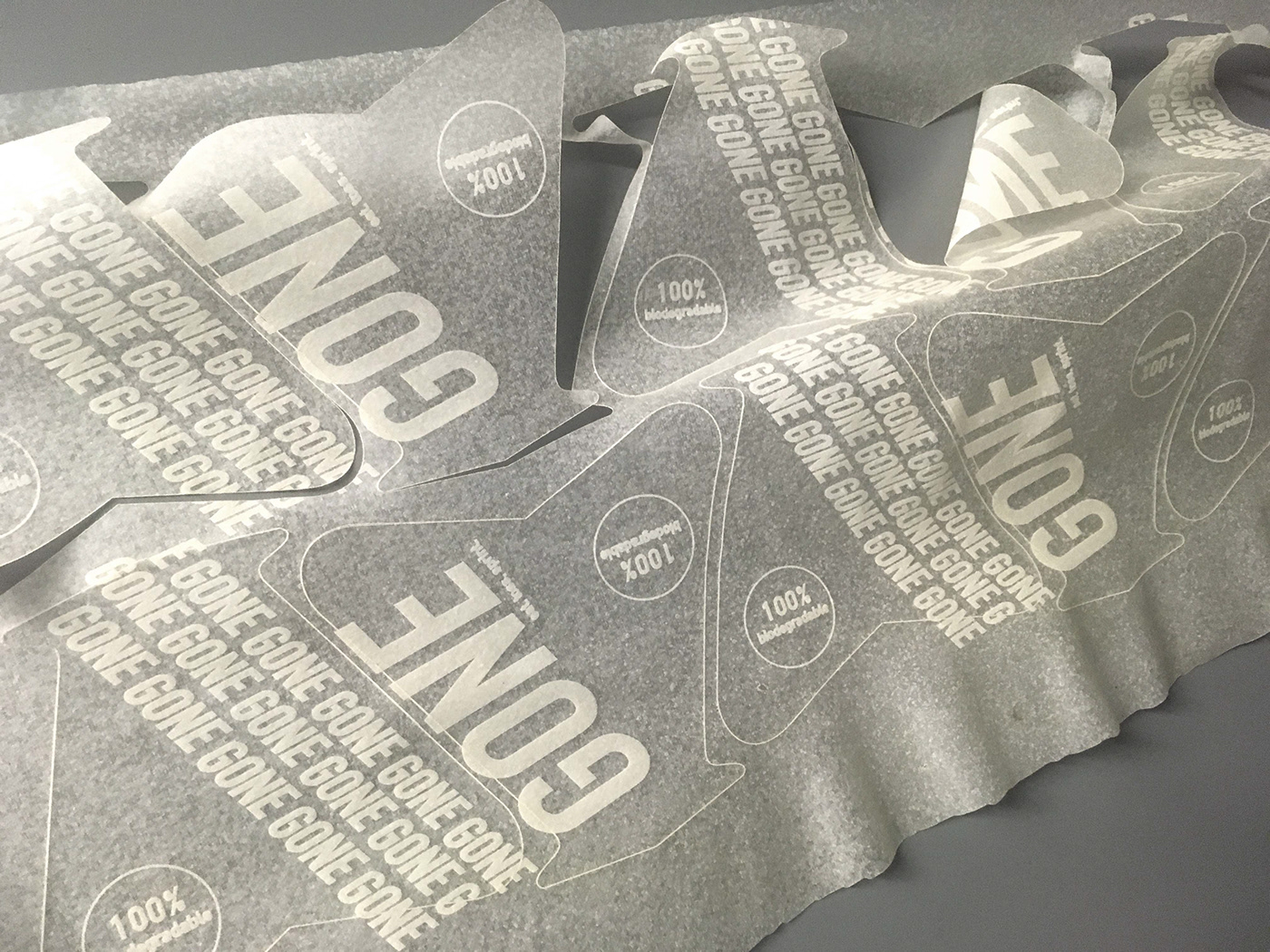
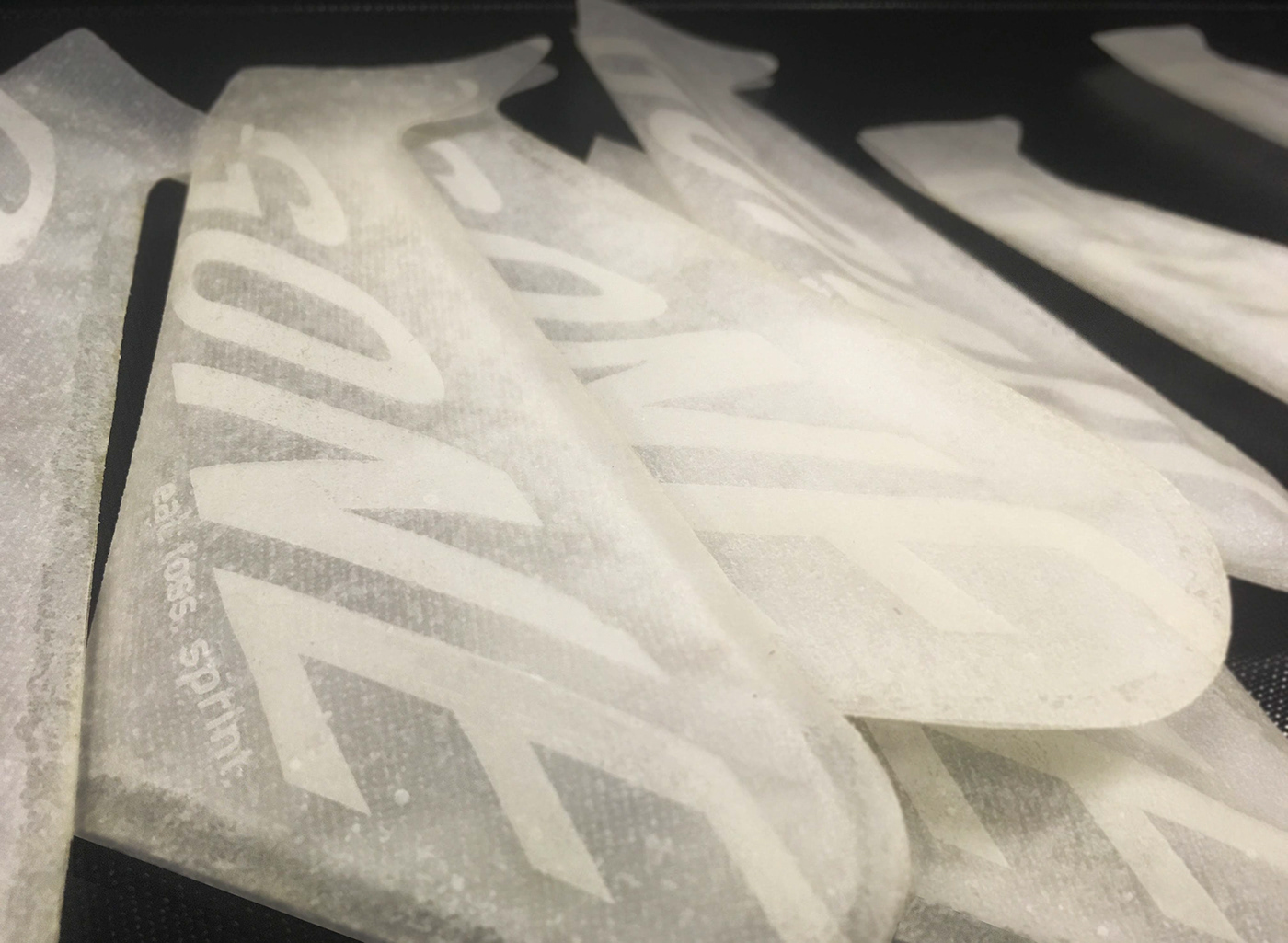
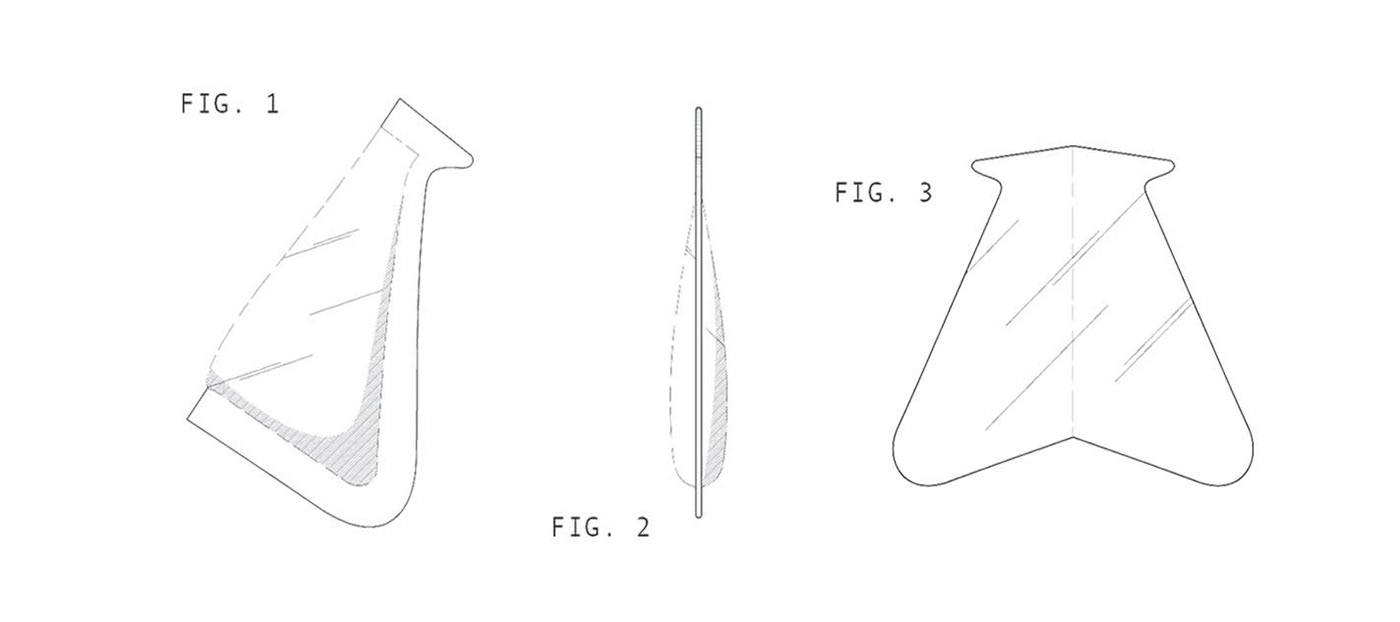
Design patent drawings. This product is currently patent pending.


Based on testing (left) the material has no perceptible impact on pH levels of nearby water, even when directly submerged.

